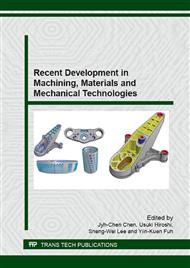p.3
p.8
p.14
p.18
p.23
p.28
p.33
p.39
Acidic Treatment of CaO-Based Materials for Medium-High Temperature CO2 Capture
Abstract:
In this work, a series of CaO-based materials for medium-high temperature (500-800 °C) CO2 capture were synthesized from limestone by acidic treatment. In order to enhance its thermal stability, CaO-based materials were modified with Al(NO3)3. With various stirring time of 24, 48 and 72 hours, three types of CO2 capture sorbent were synthesized, named LA24, LA48 and LA72, respectively. TGA results showed the CaO-based materials were activated in the CO2 capture reaction of temperature range of 500-800 °C. LA24 exhibited the best CO2 capture capacity of 53.8 wt % as well as stability of 93.2 % after 10 cycles test. Furthermore, all of the modified CaO-based materials showed good thermal resistance upon 900 °C. It was consistent with expectation by the contributions of alumina coexistence with calcium oxide. XRD results indicated that CaO dominated in the diffraction spectrum before capturing CO2, and a side diffraction peak of Al2O3 was also observed. The characterization of CaO-based materials was also investigated by BET and SEM, respectively.
Info:
Periodical:
Pages:
18-22
Citation:
Online since:
July 2015
Authors:
Keywords:
Price:
Сopyright:
© 2015 Trans Tech Publications Ltd. All Rights Reserved
Share:
Citation:


